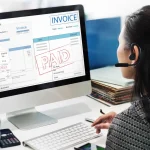How to manage e-invoicing in the MyInvois portal effectively?
In the era of e-invoicing, there is a transformative shift in how invoices are created, shared, and stored. Whether as a business entity or an individual taxpayer, it is crucial to ensure a successful transition to e-invoicing. There were two mechanisms available to transmit the e-invoices to the IRB, either through the MyInvois portal, or Application Programming Interface (API). This article will outline the steps involved in generating an e-invoice for both mechanisms.
Step 1: Creation and submission
When a sale or transaction is made, the supplier must first create an e-invoice by inputting all the required information and submit it to the IRB via the MyInvois Portal / API for validation.
Step 2: Validation
IRB will validate the invoice on a real-time basis. Once the invoice has been validated, the supplier will receive a validated e-invoice from IRB via the MyInvois Portal / API. The validated e-invoice will include the IRB Unique Identifier Number along with the date and time of validation and validation link. Besides, a QR code will be attached to the validated e-invoice for verification purposes.
Step 3: Notification
The supplier and the buyer will both receive a validation notification from IRB. However, the method of notification transmission by IRB slightly differed between the two approaches.
Should the supplier choose to generate an e-invoice using the MyInvois Portal, validation notifications will be sent to both the supplier and buyer via MyInvois Portal and email. Conversely, if the supplier decides to generate an e-invoice through an API, the MyInvois System integrates a Notification API and automatically triggers notifications to both the supplier and buyer.
Step 4: Sharing
The next step is sharing the validated e-invoice with the buyer. Before sharing the e-invoice with the buyer, the supplier is obliged to share the validated e-invoice with the buyer after embedding the validated link (provided by IRB) in the form of a QR code. The QR code can be used to validate the existence and status of the e-invoice.
Step 5, 6 and 7: Rejection and cancellation
Upon issuance of the e-invoice, the buyer or supplier has the option to either cancel or reject the said e-invoice within 72 hours. If this 72-hour timeframe is exceeded, the e-invoice will be automatically accepted. Any adjustments will require the issuance of a new invoice, debit note, credit note, or refund.
Step 8: Storing
All accepted and validated e-Invoices submitted via the MyInvois Portal or API will be stored in IRB’s database.
Step 9: Dashboard service
Both supplier and buyer have the option to request and retrieve e-invoice data such as invoice date, amount, invoice status, and other relevant information submitted to IRBM via the MyInvois Portal.
The implementation of e-invoicing enables better traceability of invoice data as well as increased transparency throughout the invoice process. Therefore, it’s crucial for businesses to start adapting to e-invoicing now. Don’t know where to start? No worries, subscribe to TaxPOD now to access decades of tax-saving knowledge at your convenience, anytime and anywhere. For more information on how YYC taxPOD can assist your business, visit our official website or book a demo session.
Explore Our Knowledge Hub!
Discover a wealth of tax-related knowledge at our comprehensive Knowledge Hub. Whether you’re looking for in-depth articles, answers to frequently asked questions, or informative videos, we’ve got you covered. Visit the links below to explore each section:
Enhance your tax knowledge and stay up-to-date with the latest information by visiting our Knowledge Hub today.



